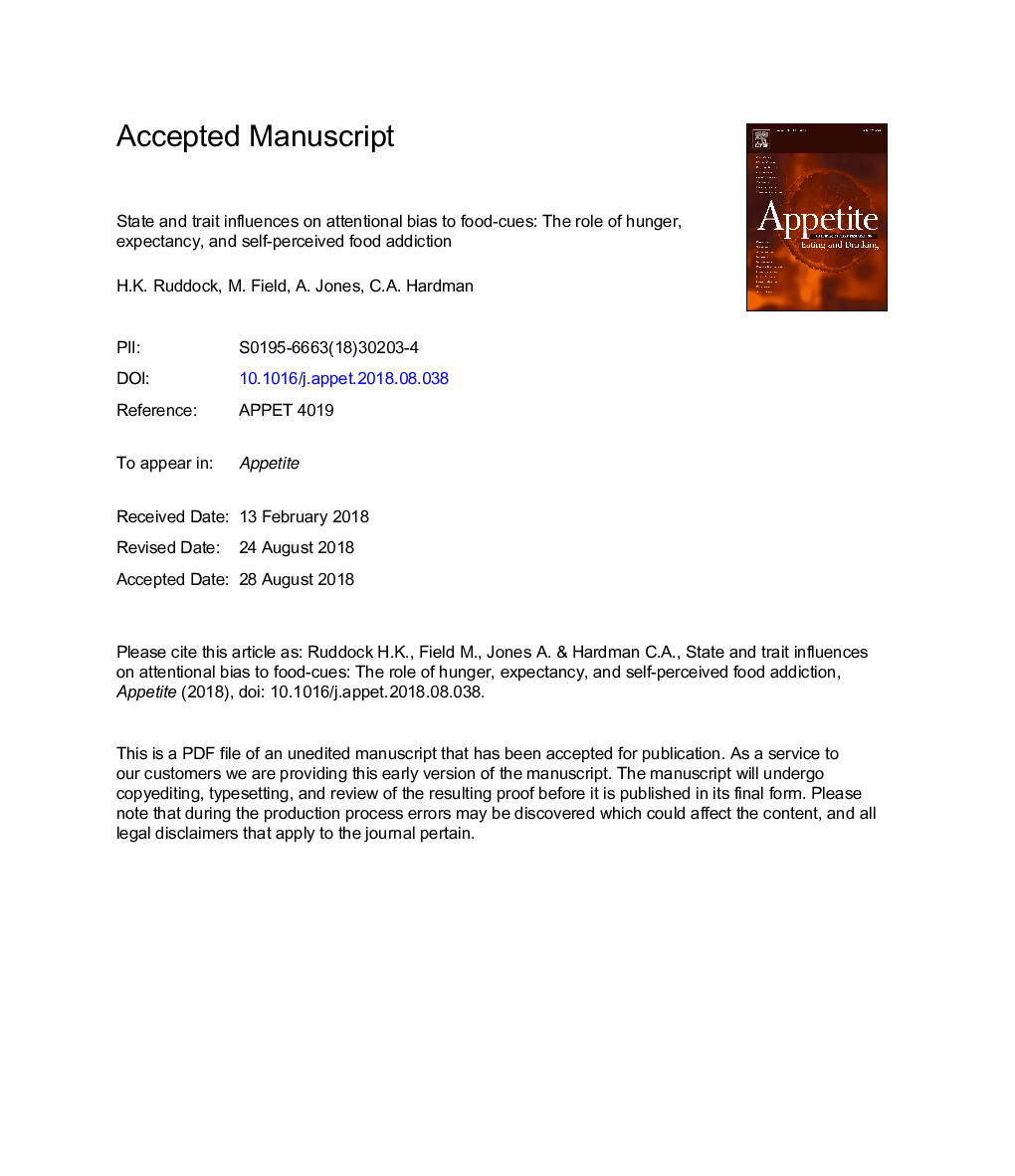| کد مقاله | کد نشریه | سال انتشار | مقاله انگلیسی | نسخه تمام متن |
|---|---|---|---|---|
| 10140394 | 1646015 | 2018 | 30 صفحه PDF | دانلود رایگان |
عنوان انگلیسی مقاله ISI
State and trait influences on attentional bias to food-cues: The role of hunger, expectancy, and self-perceived food addiction
ترجمه فارسی عنوان
تأثیرات دولت و صفت بر شیوه تمرکز توجه به نشانه های غذا: نقش گرسنگی، امید به زندگی و اعتماد به نفس خودخواهانه
دانلود مقاله + سفارش ترجمه
دانلود مقاله ISI انگلیسی
رایگان برای ایرانیان
کلمات کلیدی
موضوعات مرتبط
علوم زیستی و بیوفناوری
علوم کشاورزی و بیولوژیک
دانش تغذیه
چکیده انگلیسی
Food-related attentional bias (AB) varies both between individuals (i.e. trait differences) and within individuals (i.e. state differences), as a function of a food's momentary incentive value. People with self-perceived food addiction (SPFA) find food particularly rewarding and may therefore demonstrate increased AB to food-related cues, relative to those who do not perceive themselves as food addicts. However, these trait differences may interact with state factors, such as hunger and the perceived availability of food, to differentially affect AB to food-cues. In the current study, female participants (Nâ¯=â¯120) completed an eye-tracking task to assess AB to chocolate pictures in which the expectancy of receiving chocolate was manipulated on a trial-by-trial basis (0%, 50%, 100%). Participants were randomly allocated such that half completed the task when hungry (hungry condition), and half completed the task following a lunch meal (satiated condition). Participants also indicated the extent to which they perceived themselves to be 'food addicts' (SPFAs: nâ¯=â¯37; Non-addicts: nâ¯=â¯53; Undecided: nâ¯=â¯28). Consistent with previous findings, there was a significant main effect of chocolate expectancy; food-related AB was greater on 100% and 50% trials, compared to 0% trials. However, there was no effect of hunger condition (hungry vs. satiated) on AB. Contrary to our hypotheses, SPFAs did not show increased AB to food-cues, and this was not moderated by hunger condition or the expectancy information. Exploratory analyses revealed that higher desire-to-eat (DtE) chocolate was associated with increased AB to chocolate pictures. These findings partially support contemporary theoretical models of AB by indicating a key role for state factors (reward expectancy, DtE) in determining AB to food-cues, while a trait factor (SPFA) was not a significant determinant of food AB.
ناشر
Database: Elsevier - ScienceDirect (ساینس دایرکت)
Journal: Appetite - Volume 131, 1 December 2018, Pages 139-147
Journal: Appetite - Volume 131, 1 December 2018, Pages 139-147
نویسندگان
H.K. Ruddock, M. Field, A. Jones, C.A. Hardman,
